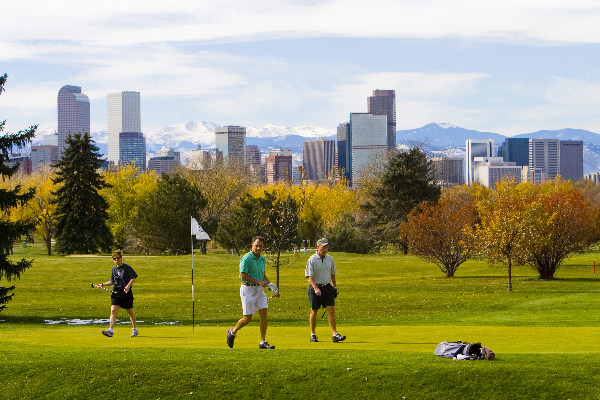It may just be a function of weather, or of year-to-year fluctuations, but whatever the reason, Colorado apparently bucked a national trend last year when it came to number of golf rounds played.
Golf Datatech has reported that rounds in the U.S. in 2017 were down 2.7 percent compared to the previous year. But Colorado went against the tide.
The CGA recently completed compiling the 2017 Public Golf Course Rounds and Revenue Survey. A higher-than-normal number of facilities — 82, including Par-3s — have reported exact figures for both 2016 and ’17, which makes the results reliable.
And the outcome was encouraging from the perspective of the golf industry in the Centennial State. Using the numbers provided by those 82 courses, rounds increased 3.3 percent compared to 2016.
And green-fee revenue was up 6.7 percent in 2017, compared to the year prior, according to the 72 facilities that reported figures for both of the most recent two years.
“It would be a concern to me if rounds were up 6 percent and (green-fee) revenue only up 3, but the way it was is a perfect combination because that means the asset (courses) is not taking a beating by having” a significant increase in rounds but a far more modest green-fee revenue gain, said Ed Mate, longtime executive director of the CGA. “Three percent increase in rounds and 6 percent in revenue — double the revenue increase compared to rounds — is kind of a perfect, healthy trend.”
The comparison of Golf Datatech round numbers to those gathered in the Colorado Public Golf Course Survey is not completely apples to apples because the Datatech figures include private facilities as well. But that organization’s overall numbers for Colorado — an increase of 3 percent — are remarkably close to those of the Colorado Public Course Rounds and Revenue Survey.
According to the Golf Datatech figures, only three states or combination of states fared better than Colorado in percentage of rounds increase from 2016 to ’17: New Mexico (5.5 percent), Tennessee (5.1 percent) and Kansas/Nebraska (3.1 percent).
“The weather is a good thing, but the economy has been on the rebound so I think that’s why revenue is up” in the Colorado public rounds survey, said Eddie Ainsworth, executive director for the Colorado PGA. “The economy is doing well, so golf is doing well. And last year, the weather was good. Those are all positives.”
Adding to that, the public rounds figures from the Colorado Rounds and Revenue Survey have increased three of the last four years, with the lone exception being 2016, when the numbers were down nominally (0.8 percent) compared to 2015. Rounds increased 3.6 percent from 2013 to ’14, and 1.2 percent from ’14 to ’15. In the previous four-year period (2010-13), rounds decreased from the prior season in three of the four calendar years.
“As long as the weather cooperates, I think rounds should continue to increase,” Ainsworth said. “All the things that everybody is doing to grow the game — all the efforts to make golf more inclusive, what we’re doing with junior golf and trying to get more families out at the golf course, private clubs becoming more family entertainment centers to get the entire family involved — I think everybody’s efforts are paying some dividends.”
Regionally within Colorado, public courses in the Denver metro area fared better than average regarding rounds, with a 4.7 percent increase from 2016. The Colorado Springs Region was up 8.9 percent, while the North Region was down 1.8 percent.
Each of those regions saw jumps in green-fee revenue — 8.7 percent in Denver metro, 3.7 percent in Colorado Springs and 3.5 percent in the Northern Region.
“First of all, I think (the results of the survey are) positive,” Mate said. “You should never take that for granted. It’s the first time in several years we’ve seen that positive a result with both rounds and revenue. My standard stock answer is weather, weather, weather. It’s about inventory of days for golf — that, I know, was favorable, particularly at the tail end of the season. We just played an awful lot of golf.
“I think you’ve seen some courses do some catch-up with green fees. As a whole, there’s been enough elasticity of pricing that courses have been able to implement increases, and that’s really healthy.”
Mate particularly likes to hear when rounds and revenue numbers have gone up three of the last four years.
“You start to look at it over a three- to five-year period and then you say it’s a trend, which is good,” he said. “Weather tends to even out over that period of time. You have to recognize that we’re an outdoor industry. We are at the whim of Mother Nature. It’s not like restaurants. We’re much more susceptible to that than others — skiing the same way. So yes, I think it’s a very positive trend.”
Though Colorado public course operators share their statistics on the condition that data from individual facilities aren’t divulged publicly, trends and averages from the survey can be reported.


